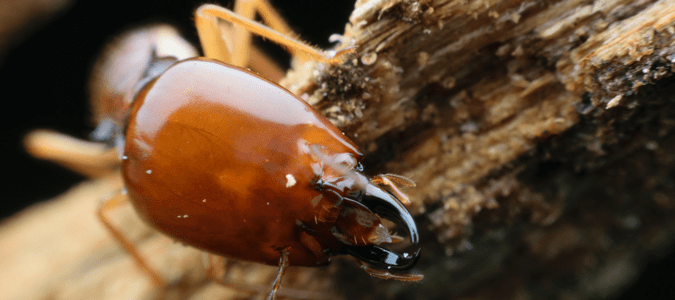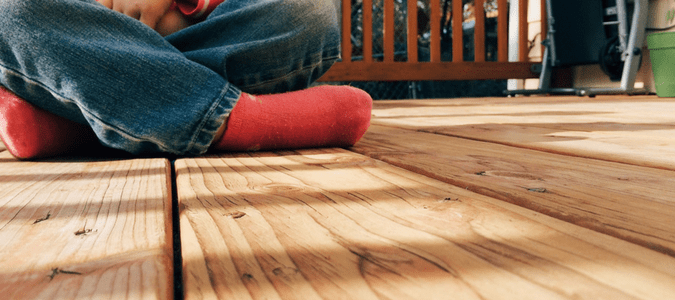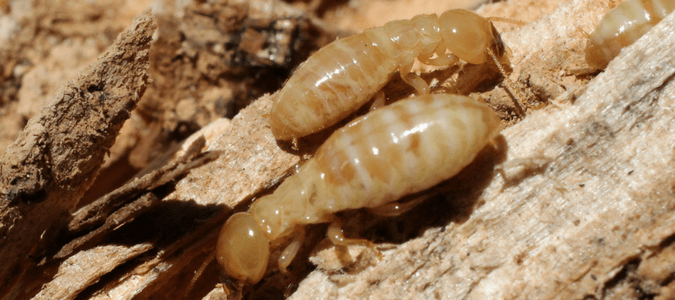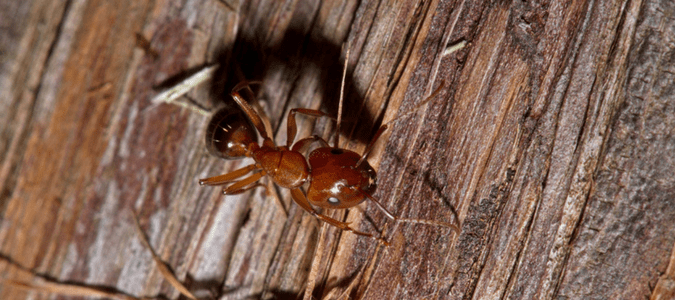
Termites. They’re one of the worst fears of every homeowner, for good reason.
Catch an infestation too late and your house can literally be eaten away from beneath you, costing you time, stress and a lot of money. All told, termite damage costs Americans billions of dollars every year, with additional billions being spent to get rid of them.
How can you protect yourself against these high costs and win the fight against termites?
Know your enemy.
In this post, you can learn all about soldier termites and the role that they have in subterranean colonies.
When you have a better understanding of what you’re up against, you’ll be far more successful at combating these incredibly destructive pests.
The Role of the Soldier Termite
Bee colonies have workers and drones and a queen. Ant colonies follow a similar structure, with a single queen, workers and males who only mate with future queens.
A termite colony is a bit different. While there are still workers and a single queen, these insects also have a king (the only one who mates with the queen), reproductives (who fly off to set up new colonies) and, of course, soldiers.
What do soldiers do? As their name would imply, they are the fighters and guardians—the defenders of the colony. Whereas all ants can fight, this is not true in the termite world. Workers and others are completely defenseless, leaving it up to the soldiers to protect them.
Sometimes this protection specifically involves fighting—typically against other termites or ants. Soldiers use their tough, armored heads to stay safe, and their large mandibles to bite or, in some termite species, fling enemies away.
Other times, soldiers are used for defense and as a sort of “early warning signal.” For example, if the walls of the colony are breached, it is the soldiers’ job to block and secure that breach, typically by creating a phalanx against would-be intruders. Some species also bang their heads on the ground to let other termites know that there is danger.
One thing soldier termites can’t do? Feed themselves.
That’s right. They are entirely dependent on workers, who must constantly feed them in order to keep them alive. No workers, no soldier termites because they can’t survive on their own.

Soldier Termite Bite: Do You Need To Be Worried?
One thing people always worry about when they hear about soldier termites is their bite. Do you need to worry about being bitten? Can a soldier termite hurt you?
Let’s start with the actual act of biting. Technically, the answer is yes. It is possible that you could get bitten by a soldier termite.
There are a couple of caveats to attach to that statement, though:
- Though soldier termites possess the ability to bite you, it almost never happens. This type of termite has been created specifically to fight and defend against other insects, not humans. So soldier termites aren’t going to attack you—even if you invade the colony and start wiping them out. The only way you’re likely to receive a bite from a soldier termite is if you actually pick one up. Understandably, its reaction may be to fight back against a perceived attack by biting you.
- If you do get bitten, there’s a decent chance you won’t feel it at all. And if you do, all you’re likely to experience is a tiny pinch akin to a mosquito bite, followed by a tiny red spot that disappears within a few days.
What should you do if a soldier termite bites you?
Very likely, you won’t need to do anything. There haven’t been any documented cases of people getting sick from termite bites, and in the vast majority of cases, there is just that tiny bit of pain followed by healing within a few days.
However, it is possible that you may feel a small amount of burning or itching due to the saliva on their mandibles, which is designed to break down the cellulose in wood. If the bite does cause itching or irritation, the best thing to do is to use hydrocortisone or a similar type of cream.
If you are still dealing with irritation after a few days, you may not be dealing with a termite bite at all and may wish to consult with your doctor.

What Do Worker Termites Look Like When Compared To Soldiers?
How can you tell soldier termites apart from worker termites?
Workers share the following characteristics:
- White or creamy in color
- Soft-bodied
- Slightly darker head
- Hardened mouthparts
- Wingless
- Molt without changing size
- Measure anywhere from ¼ to 3/8 of an inch long
- Responsible for building and repairing tunnels, finding food and feeding and grooming the other castes
Soldiers, on the other hand, are:
- Similar in appearance to workers in terms of color and general features
- Have enlarged heads that may be brown, orange, red or yellow
- Use long mandibles for defense (some soldier species instead have snouts that they use to spray invading ants with a liquid that repels them)
Some colonies create two types of soldiers—larger ones to deal with “heavy duty” fighting and smaller ones to deal with tiny foes and direct the traffic of workers.
Basically, you can recognize soldier termites by their larger, darker heads and mandibles, and by what they’re actually doing.

Termite Soldier Vs. Ant: What Are The Differences?
Generally speaking, you’re probably not going to be comparing a soldier termite to an ant to determine which invader you’re dealing with. As a rule, termites like to stay far more hidden in comparison to ants. So, if you see insects out in the open and you’re wondering whether they are termites or ants, the answer will almost always be ants.
The exception to this rule would not involve a soldier termite, but a winged termite headed off to set up a new colony. You can tell the difference between winged termites and ants in the following ways:
- While both creatures have four wings, termite wings are all about the same length; ants, in contrast, have longer front wings and shorter back wings.
- Termites have antennae that are straight and may droop; antennae on ants are bent at a 90-degree angle.
Let’s say you stumble upon a nest of insects inside a piece of wood, though. You’re wondering: termites or carpenter ants?
If you are trying to tell the difference between these two creatures, you’ll want yourself a few questions.
Are most of the insects light and creamy or dark or reddish?
Termite bodies are typically lighter, while those of ants are darker.
Do you notice a line of insects heading in and out of the hidden nest?
Ants are far more likely to forage in the open; termites, in contrast, often build special foraging tunnels or covers (mud tubes) to keep from being out in the open.
Are there wood shavings around?
Termites eat the wood as they tunnel through it; carpenter ants only seek to carve out tunnels in the wood to form a nest. Shavings indicate that the insects are ants.
Are you swarmed and attacked if you disturb them?
One of the biggest differences between ants and termites is that all ants are capable of fighting and biting. With termites, only the soldier class can do this, and they tend to make up a relatively small percentage of total termites in the colony—somewhere between 10 and 30 percent. Disturb carpenter ants and you are likely to experience a swarming attack as all of the ants come to the defense of the colony.

Discovering a Termite Infestation: What Do Termites Sound Like In Your Wall?
Since termites rarely surface, uncovering an infestation can be a bit tricky. In fact, most people don’t realize that they have termites until they accidentally stumble across a rotten, brittle piece of wood and find the destructive little critters hiding inside.
Still, there are signs you can pay attention to, and one of the most important things you can do is listen.
That’s right. While typically you won’t be able to hear termites crawling around in your walls, you can definitely use your ears to help you uncover a hidden colony. How? What should you listen for?
A hollow-sounding tone
Periodically tap on the wood in your home. Termites feed (and create their living spaces) by tunneling through wood, essentially hollowing the wood out. If you notice a hollow sound when you tap on the wood, there’s a decent chance you may be dealing with termites.
Light rustling
While this won’t necessarily work with all species, drywood termites have been known to tunnel very close to the surface of the wood. So close that if you put your ear (or a stethoscope) against the wood, you may hear a light, paper-like rustling sound that indicates termites crawling around.
Rattling
Remember what we told you above about soldier termites banging their heads to warn others in the colony about a breach in their walls or a threat? Well, this noise is actually something that you can hear, and it sounds like a dry rattling. It may even be possible to get soldier termites to make this noise yourself by tapping on a wall where tunneling is currently occurring because the soldiers will feel the vibration and possibly interpret it as a threat.
In addition to the methods described above, you can also periodically probe wood in and around your home with a flathead screwdriver or something similar to see if you uncover hollow spots.
Win The Battle Against Termites With ABC’s Help
While there are a number of prevention measures you should engage in to discourage termites from entering your home and property, once they have invaded you will most likely need to employ a termiticide to get rid of them. That means working with a skilled professional. In fact, the EPA says that in most cases, termiticide can only be applied by “a trained pest management professional.” Your home is your biggest investment, so trust your treatment to ABC, who will take care of your termite problem before these pests do any more damage.
